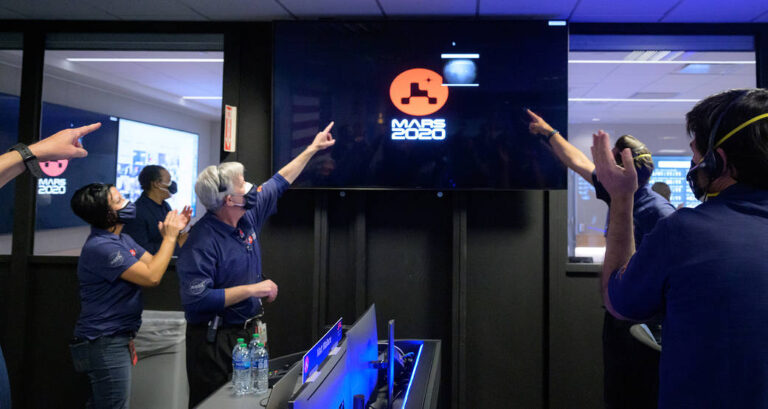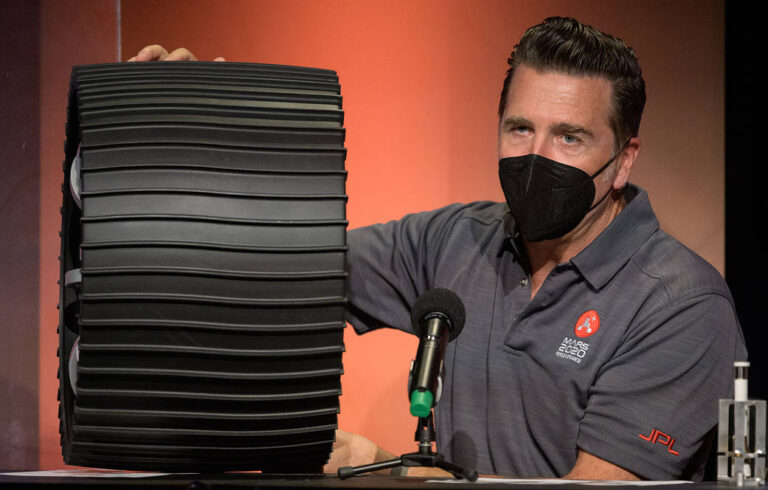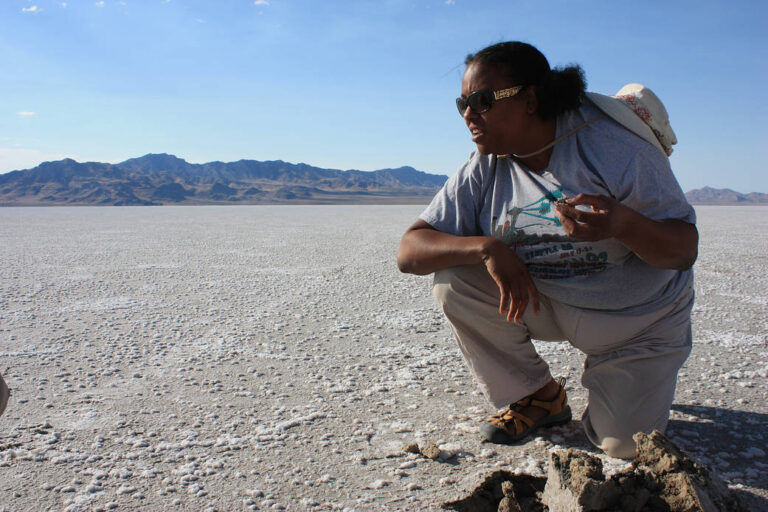毅力火星车登陆火星
Members of the Perseverance Mars Rover team watch in mission control at NASA’s Jet Propulsion Laboratory as the first images arrive moments after the spacecraft successfully touched down on Mars, Thursday, Feb. 18, 2021. A key objective for Perseverance’s mission on Mars is astrobiology, including the search for signs of ancient microbial life. The rover will characterize the planet’s geology and past climate, pave the way for human exploration of the Red Planet, and be the first mission to collect and cache Martian rock and regolith. Image Credit: NASA/Bill Ingalls 2021年2月18日(星期四),毅力号火星车团队团队的成员在美国宇航局喷气推进实验室的任务控制中心观看探测器成功着陆火星后的第一批图像。毅力号火星任务的一个关键目标是天体生物学,包括寻找古代微生物生命的迹象。探测器将描述火星的地质和过去的气候,为人类探索这颗红色星球铺平道路,并将成为第一个收集和隐藏火星岩石和风化层的任务。 图片来源:NASA/Bill Ingalls










